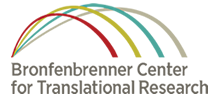 On the whole, public schools in the U.S. are doing a poor job of teaching sex education to American youth.
On the whole, public schools in the U.S. are doing a poor job of teaching sex education to American youth.
A report released last year by the U.S. Centers for Disease Control found that fewer than half of high schools and only a fifth of middle schools teach all 16 topics the CDC lists as essential components of sex education. Those topics include how to obtain and use condoms, the benefits of condom use, and the kinds of preventative care necessary to maintain sexual health.
The gap has consequences. Young people experience the highest risks for sexually-transmitted disease out of any age group in the nation. National data collected by the CDC find that nearly half of high school students have been sexually active, and half of all new sexually transmitted infections occur among people ages 24 and younger. In 2014, people ages 13 to 24 accounted for 22 percent of new HIV infections.
This month, the American Academy of Pediatrics published a new report to update pediatricians on the status of sex education and offer suggestions for improving the current system.
The report recognizes the importance of providing young people with critical information and skills that will promote their health and well being, and prevent sexual risk prior to their becoming sexually active said Jane Powers, Director of the ACT for Youth Center of Excellence at the Bronfenbrenner Center for Translational Research. Powers’ group provides evidence-based programming and training to support positive youth development and adolescent sexual health in communities across New York State.
For example, she explained, the report recommends that pediatricians encourage parents to discuss sexuality at home in a way that’s consistent with the family’s values and beliefs.
“Studies have shown that most teens want to talk to their parents about sex, sexuality and relationships,” Powers said. “Young people who communicate with their parents about sex are less likely to engage in sexual risk taking. Parents should talk early and often about sex—and normalize these discussions.”
The report also describes that sex education involves teaching about all of the facets of human sexuality including intimate relationships, human sexual anatomy, reproduction, sexually transmitted infections, consent, sexual orientation, abstinence, contraception, and reproductive rights and responsibilities. And it encourages families to seek out information about sexuality from multiple sources, including pediatricians, schools and other reputable organizations.
The report encourages pediatricians to acknowledge that sexual activity may be pleasurable but also must be engaged in responsibly. It also suggests that pediatricians explain to their young patients how to prevent pregnancies and STDs, including reproductive cancers, before they become sexually active.
The report also points to a body of research showing that abstinence-only sexual educations programs are ineffective at preventing pregnancy and STDs, while comprehensive sex education—which includes information about condoms, STDs and contraception—encourage students to delay intercourse and promote other protective behaviors, such as condom use.
The take-home message is clear: Adolescents need to hear from responsible adults in their lives about all aspects of sexuality including intimate relationships, the risks of sexually-transmitted disease and safe practices including abstinence and condom-use.



Speak Your Mind